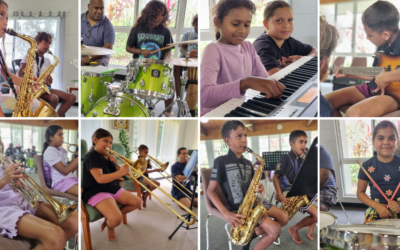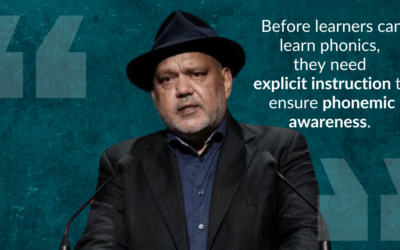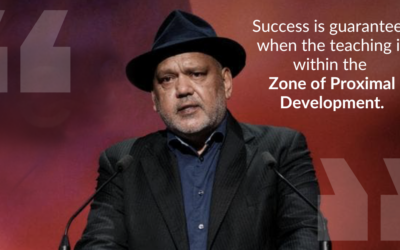Art education plays a pivotal role in the holistic development of children, nurturing creativity and the ability to think critically. Good to Great Schools Australia’s (GGSA’s) primary school Visual Arts program offers an in-depth understanding and integration of visual arts into primary school curriculums, aligning with Australian standards to ensure students can express themselves proficiently and appreciate the world of art. This post will introduce you to engaging strategies for teaching art, along with practical tips to enhance your students’ creative journeys.
Essential Art Techniques for Primary Students
In the Australian art curriculum framework, certain essential techniques form the foundation of primary students’ art education.
- Contour Drawing: Teaches students to observe and capture the outline and significant details of their subject, enhancing observational skills.
- Negative Space: Challenges students to focus on the space around and between objects, strengthening their understanding of composition.
- Light and Shadow Techniques: Introduces nuances of creating depth and realism, enabling lifelike representations in art.
- Utilisation of Various Materials: Exposure to traditional mediums (watercolours, acrylics, clay) and digital tools (graphic design, photography) enriches creative experiences.
- Technology in Art: Digital tools open up innovative ways to express ideas, emphasising the importance of mastering both traditional and modern techniques.
By gaining a grasp of these techniques and understanding the use of different materials, young artists can effectively enhance the visual impact of their creations. This approach aligns with Australian curriculum requirements, encouraging critical thinking and informed artistic decisions.
Exciting Exploration and Art Analysis
Exploring diverse cultures, especially Aboriginal and Torres Strait Islander traditions, is a crucial part of Australian art education. Here’s how teachers can make it hands-on and engaging for students:
- Incorporate storytelling, traditional music and dance with visual arts to understand these cultures deeply.
- Study traditional patterns and colours and their meanings.
- Learn about the significance of land and nature in Indigenous art.
- Explore contemporary artists who merge traditional practices with modern techniques.
Practical classroom ideas:
- Compare students’ artworks with those of famous artists, including Indigenous Australian artists, to enhance their critical assessment skills.
- Focus on hands-on learning by practising traditional and contemporary art techniques.
- Encourage exploration of a broad spectrum of artistic expressions, focusing more on creating art that reflects learning about these rich cultures.
Art Creation and Student Engagement
To foster a deep understanding of art, students should explore diverse artistic viewpoints, seeing art as a personal and communal expression that crosses cultural and historical boundaries. They should analyse how various beliefs and views can be artistically represented, pushing them to think beyond their immediate surroundings.
Maintaining art journals or portfolios can be a great way for students to document their artistic journey, reflect on their work and understand the impact of their technical choices and the influence of different artistic views on their creations. This practice enhances their strategic approach to art, improving their work’s clarity, depth and complexity.
The GGSA Visual Arts curriculum includes innovative exercises like upside-down drawing, drawing in negative space and relationship-based drawing to challenge students’ perspectives and improve observational skills. These exercises boost technical abilities and encourage students to view the world more deeply and interpretively through art. Explore more by following the link below.
Showcasing and Reflecting on Student Artworks
The GGSA Visual Arts curriculum highlights the critical role of art presentation, teaching students that the impact of their work depends significantly on how it’s displayed. Through physical and digital exhibitions, students learn that lighting, spacing and sequencing are key in shaping how their art is received. These exhibitions showcase student talent and demonstrate the importance of the artwork’s context and relationship with the audience.
Furthermore, the curriculum incorporates digital platforms, encouraging students to explore the reception of their art in different cultural contexts through virtual galleries and social media. This approach broadens their perspective and improves their ability to engage with a global artistic community, receive constructive feedback and refine their work. The goal is to foster artistic literacy and critical thinking in a digitally connected world, making students more adept at effectively creating and presenting their art.
Practical Tips for Integrating Art into Lesson Plans
To incorporate these strategies into Art lesson plans, educators should consider the following practical tips:
Tailoring Lessons to Diverse Schedules
- Modular Activities: Design activities that can be adjusted in scope to fit various class durations. Short sessions can focus on introducing concepts or techniques, while longer periods allow for in-depth projects or critiques.
- Flexible Project Milestones: Establish key milestones within projects that accommodate varying class schedules. This approach helps students understand how to break down larger projects into manageable tasks.
Adapting to Student Needs
- Differentiated Instruction: Adapt teaching strategies to cater to diverse learning styles and needs. This may include providing visual aids, step-by-step demonstrations, or varying the complexity of assignments.
- Personalised Feedback: Tailor feedback to individual students’ developmental stages in their artistry. Encourage self-assessment and goal-setting to foster autonomy and continuous improvement.
Integrating Technology
- Digital Resources: Utilise online galleries, virtual museum tours and digital art platforms to expose students to various artworks and artistic techniques. This is especially useful for schools with limited access to local art resources.
- Art Creation Software: Incorporate digital art-making tools into the curriculum to introduce students to contemporary practices and expand their creative possibilities.
Community Engagement
- Local Artist Collaborations: Invite artists from the community to conduct workshops or talk about their work. This not only enriches the curriculum but also helps students make connections between their studies and the broader art world.
- Exhibition Opportunities: Organise art shows for students to present their work in the school or local community. This builds confidence and public speaking skills, providing a practical application of their learning.
Cross-Disciplinary Projects
- Collaborative Lessons: Work with colleagues to create interdisciplinary projects relating art to history, science, or literature. This helps students make meaningful connections across the curriculum.
- Cultural Research Assignments: Assign projects that require students to research art from different cultures or historical periods. This will promote a deeper understanding of the subject matter and enhance their research and critical thinking skills.
By implementing these strategies, teachers can create a dynamic and responsive art education program that caters to their students’ varied needs and the logistics of their class schedules. This approach not only makes art education more accessible but also more impactful, as it connects students with their cultural heritage, the global art community and interdisciplinary knowledge, fostering a well-rounded and engaging learning experience.
Assessing Art and Providing Constructive Feedback
Teachers of Visual Arts should employ a multifaceted approach to assess students’ artwork, intertwining both formative and summative assessment strategies to offer comprehensive feedback and foster ongoing learning and improvement.
Creativity and Originality: Students are assessed on their ability to express unique ideas and perspectives through art, demonstrating innovation and personal voice.
Technical Skills and Application: Students’ proficiency with materials and techniques is evaluated, considering their understanding and execution of artistic principles.
Conceptual Understanding and Thematic Exploration: This criterion assesses how effectively students communicate themes, messages or concepts through their artwork, reflecting their ability to connect their work to broader cultural, social or personal contexts.
Presentation and Articulation of Artistic Intent: The clarity, coherence and aesthetic consideration of how artworks are presented for viewing, alongside the ability to verbally or textually express the ideas and processes behind their creation.
Feedback mechanisms are pivotal in encouraging improvement and deeper learning. Teachers facilitate this through:
- Individual Art Critiques: One-on-one consultations where students receive personalised feedback, focusing on strengths and areas for growth. This dialogue encourages self-reflection and targeted improvements.
- Group Critiques: Facilitated discussions among peers, guided by the teacher, where students learn to give and receive constructive feedback, fostering a supportive learning environment.
- Written Feedback: Detailed written evaluations provided by the teacher, which students can review and reflect upon at their own pace, promoting a deeper understanding of their artistic development.
- Reflective Journals: Students are encouraged to keep journals for self-assessment, where they can document their creative process, challenges faced and reflections on feedback received, facilitating a deeper personal engagement with their artistic growth.
Through these criteria and feedback mechanisms, the curriculum aims to assess the students’ artistic achievements and instil a culture of continuous learning and improvement, bolstering their confidence and competence as artists.
Conclusion: A Canvas for Creative Growth
Teaching art to young Australian learners is both a responsibility and an opportunity to encourage expression, appreciation and lifelong learning. By following the guidelines and strategies outlined in this post, educators can foster a generation of artists who are not only technically proficient but also empathetic and culturally aware. Art is a language all children can learn to speak, and a teacher’s role is critical in opening the door to this world of creativity.



